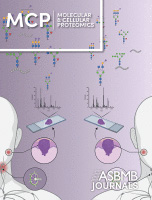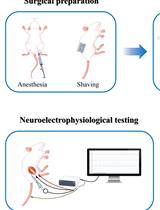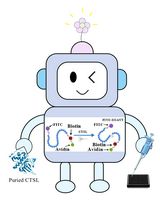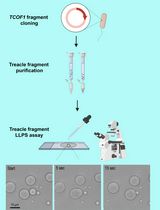- EN - English
- CN - 中文
ZnCl2 Precipitation-Assisted Sample Preparation for Proteomic Analysis
基于ZnCl₂沉淀的蛋白质组学样本制备方法
(*contributed equally to this work) 发布: 2025年07月20日第15卷第14期 DOI: 10.21769/BioProtoc.5398 浏览次数: 1849
评审: Neha NandwaniAnonymous reviewer(s)
Abstract
This manuscript details protocols for the ZnCl2 precipitation-assisted sample preparation (ZASP) for proteomic analysis. By inducing protein precipitation with ZASP precipitation buffer (ZPB, final concentration of ZnCl 2 at 100 mM and 50% methanol), ZASP depletes harsh detergents and impurities, such as sodium dodecyl sulfate (SDS), Triton X-100, and urea, at high concentrations in solution from protein solutions prior to trypsin digestion. It is a practical, robust, and cost-effective approach for proteomic sample preparation. It has been observed that 90.2% of the proteins can be recovered from lysates by incubating with an equal volume of ZPB at room temperature for 10 min. In 1 h of data-dependent acquisition (DDA) analysis on an Exploris 480, 4,037 proteins and 25,626 peptides were quantified from 1 μg of mouse small intestine proteins, reaching a peak of 4,500 proteins and up to 30,000 peptides with 5 μg of input. Additionally, ZASP outperformed other common sample preparation methods such as sodium deoxycholate (SDC)-based in-solution digestion, acetone precipitation, filter-aided sample preparation (FASP), and single-pot, solid-phase-enhanced sample preparation (SP3). It demonstrated superior performance in protein (4,456 proteins) and peptide identification (29,871 peptides), lower missing cleavage rates (16.3%), and high reproducibility (Pearson correlation coefficients of 0.96 between replicates) with similar protein distributions and cellular localization patterns. Significantly, the cost of ZASP per sample with 100 μg of protein as input is lower than 30 RMB, including the expense of trypsin.
Key features
• ZASP is a user-friendly method that enables efficient, sensitive, and cost-effective proteomic analysis in a common biochemistry lab through simple incubation and centrifugation.
• ZASP enables 90% protein recovery from lysates with various trypsin and LC–MS-incompatible reagents by incubating at room temperature for 10 min.
• ZASP enables unbiased proteomic analysis of diverse biological samples, including cells, optimal cutting temperature (OCT)-embedded tissues, and formalin-fixed paraffin-embedded (FFPE) tissues.
Keywords: Sample preparation (样本制备)Graphical overview
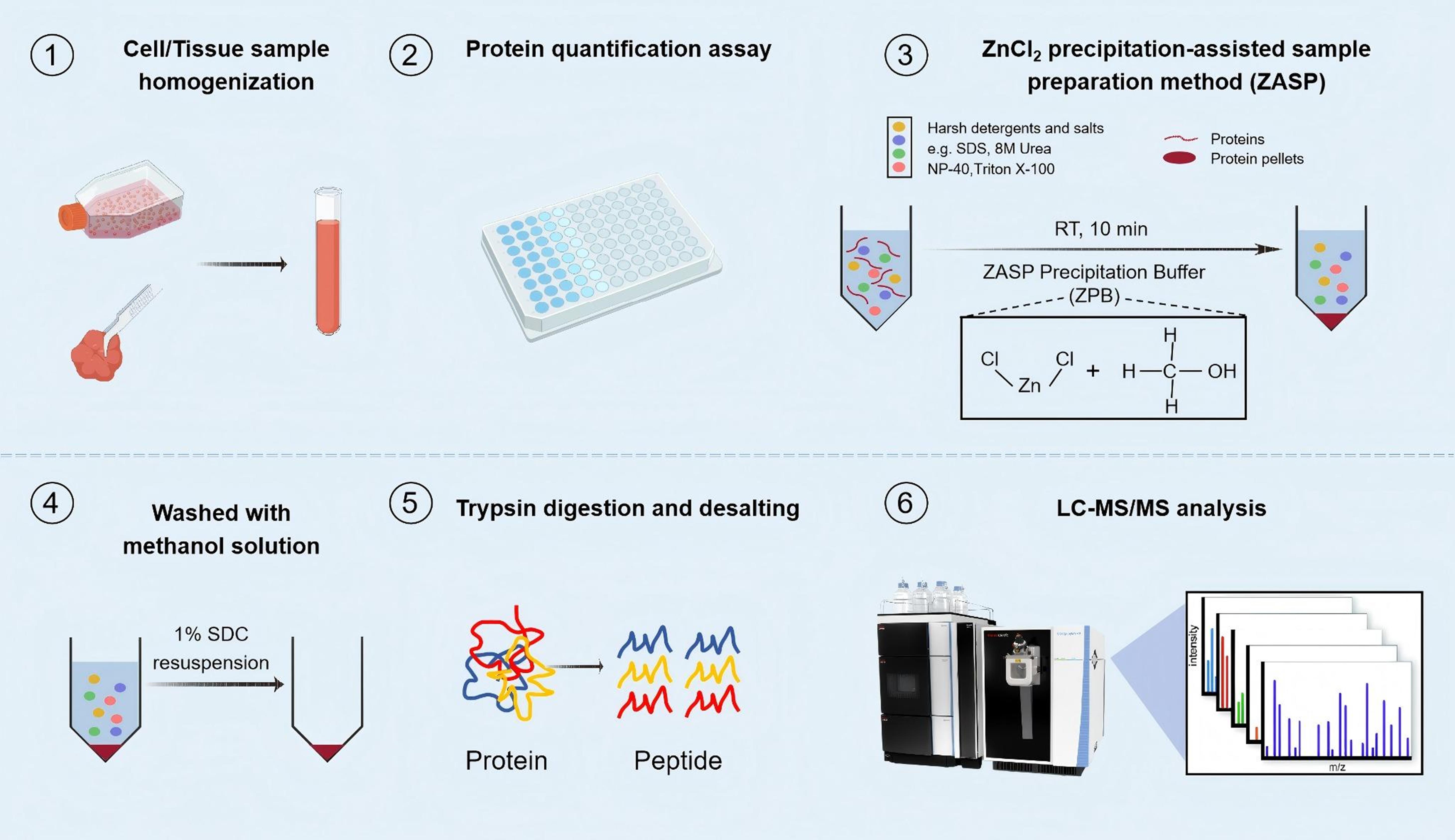
Background
Sample preparation is a critical step in proteomics analysis, including protein extraction, denaturation, reduction, alkylation, and digestion, followed by peptide purification. The quality of sample preparation directly impacts the reproducibility, accuracy, and sensitivity of LC–MS analysis [1,2]. Protein extraction is usually enhanced by adding chaotropes and detergents, such as SDS [3,4]. However, most of these additives impair subsequent protein enzymatic digestion and LC–MS analysis, thereby compromising the reliability and sensitivity of the LC–MS results [5,6]. Multiple methods, including affinity-based approaches [7], membrane filtration [8], and protein precipitation [9–11], have been developed to remove them. However, each method has its limitations, such as being labor-intensive or time-consuming, resulting in sample loss, high cost, or low throughput [8,10–14]. We aim to develop a cost-effective, simple, and widely applicable sample preparation technology to resolve these issues and enable high-quality proteomics analysis.
Zn2+-based precipitation methods have been commonly used for the initial fractionation of proteins based on their solubility, such as in the purification of antibodies from cell culture broth [15,16]. ZnSO4 and acetone aqueous solutions have been reported to rapidly recover peptides generated by trypsin and pepsin digestion prior to MS analysis [17]. Zn2+ may bind to histidine and cysteine residues on the surface of proteins via exposed imidazole and thiol groups to form relatively stable complexes [18]. Additionally, as a member of the Hofmeister series, Zn2+ can cause protein precipitation by altering the solubility of peptides and proteins in organic solvents [19–21]. Because of the stronger electrostatic interactions, Zn2+ is superior to other ions (e.g., Mg2+) in precipitating proteins from solutions [22].
Inspired by these studies, we recently developed a novel sample preparation method based on ZnCl2 and methanol-induced protein precipitation with in-solution digestion, termed ZnCl2 precipitation-assisted sample preparation (ZASP) [23]. ZASP achieves efficient recovery of proteins (recovery rate >90%) from lysates containing different trypsin- or LC–MS-incompatible detergents by incubating with an equal volume of ZASP precipitation buffer (ZPB) for 10 min at room temperature. We have demonstrated it as an efficient approach by comparing it with current popular sample preparation methods (e.g., FASP, SP3, SDC-based in-solution digestion) and profiling of different types of samples. The protocol for ZASP is described in this manuscript.
Materials and reagents
Biological materials
1. HEK 293T cells (ATCC, catalog number: CRL-3216)
2. Mouse tissues (C57BL/6) (obtained from The Beijing Proteome Research Center)
3. Yeast (ATCC, catalog number: 204508)
4. E. coli (ATCC, catalog number: 25922)
Reagents
1. Tris(hydroxymethyl)aminomethane (Tris) LC–MS grade (Pierce, catalog number: 17926) (keep in a dry, cool, and well-ventilated place)
2. Tris(2-carboxyethyl)phosphine hydrochloride (TCEP-HCl) ≥98% (Sigma-Aldrich, catalog number: 646547) (store at 4 °C)
3. 2-Chloroacetamide (CAA) ≥99% (Sigma-Aldrich, catalog number: C0267) (keep in a dry, cool, and well-ventilated place)
4. Trypsin, MS grade (Promega, catalog number: 90057) (store at -20 °C)
5. Formic acid, ≥98% (Sigma-Aldrich, catalog number: 33015) (keep container tightly closed in a dry and well-ventilated place)
6. Acetonitrile (ACN) (Thermo Scientific, catalog number: A955-4) (keep container tightly closed in a dry and well-ventilated place)
7. Sodium dodecyl sulfate (SDS) (Solarbio, catalog number: S8010) (keep container tightly closed in a dry and well-ventilated place)
8. Zinc chloride (ZnCl2) ≥98% (Sigma-Aldrich, catalog number: 208086) (keep container tightly closed in a dry and well-ventilated place)
9. Methanol, LC–MS grade) (Sigma-Aldrich, catalog number: 1.06035) (keep container tightly closed in a dry and well-ventilated place)
10. Pierce BCA Protein Assay kit (Thermo Scientific, catalog number: 23227) (keep in a dry, cool, and well-ventilated place)
11. Sodium deoxycholate (SDC) ≥97% (Sigma-Aldrich, catalog number: D6750) (keep container tightly closed in a dry and well-ventilated place)
12. Dulbecco's modified Eagle's medium (DMEM) (Gibco, catalog number: C11995500BT) (store at 4 °C)
13. Fetal bovine serum (FBS) (NEWZERUM, catalog number: FBS-CS500) (store at -20 °C)
14. Penicillin-streptomycin (Gibco, catalog number: 15140122) (store at 4 °C)
15. Trypsin-EDTA solution (Gibco, catalog number: 25300054) (store at 4 °C)
16. Phosphate-buffered saline (PBS) (Gibco, catalog number: C10010500BT) (store at 4 °C)
17. Yeast extract peptone dextrose media (YEPD) (Sigma-Aldrich, catalog number: Y1500) (keep container tightly closed in a dry and well-ventilated place)
18. Luria-Bertani medium (LB) (Sigma-Aldrich, catalog number: L2542) (store at 4 °C and keep away from light)
Solutions
1. SDS lysis buffer (see Recipes)
2. ZASP precipitation buffer (see Recipes)
3. SDC lysis buffer (see Recipes)
4. Buffer A (see Recipes)
5. Buffer B (see Recipes)
Recipes
1. SDS lysis buffer
4% SDS (w/v) and 100 mM Tris-HCl in water at pH 8.5: mix 20 mL of 10% (w/v) SDS solution stock with 5 mL of 1 M Tris, followed by the addition of 25 mL of H2 O.
2. ZASP precipitation buffer (ZPB)
Methanol consisting of 0.1% formic acid and 200 mM ZnCl2 (v/v): dissolve 1,363 mg of ZnCl2 and 50μL of formic acid in 50mL of methanol.
Note: ZnCl2 is hygroscopic and should be stored in a tightly sealed container under dry conditions. Formic acid is corrosive and should be handled with appropriate protective equipment (gloves, lab coat, and eye protection) in a fume hood.
3. SDC lysis buffer
1% SDC (w/v) and 100 mM Tris-HCl in water at pH 8.5: mix 30 mL of 5% (w/v) SDC solution with 15mL of 1M Tris-HCl, then add 90mL of H2O.
4. Buffer A
0.1% formic acid aqueous solution: mix 10 μL of formic acid with 10 mL of H2O.
5. Buffer B
60% acetonitrile solution containing 0.1% formic acid: mix 6 mL of acetonitrile with 4 mL of H2O, followed by the addition of 10 μL of formic acid.
Laboratory supplies
1. C18 solid phase extraction (SPE) disks (3M Empore, catalog number: 98060402173)
2. C18 powder (Durashell, catalog number: DC930010-L)
3. 0.5 mL centrifuge tubes (Corning, catalog number: 3208)
4. 1.5 mL centrifuge tubes (Corning, catalog number: 3620)
5. 2.0 mL centrifuge tubes (Corning, catalog number: 3213)
6. 10 μL pipette tips (Axygen, catalog number: T-300-L)
7. 200 μL pipette tips (Axygen, catalog number: T-200-C-L)
8. 1,000 μL pipette tips (Axygen, catalog number: T-1,000-C)
9. Cell culture plates (Nunc EasyDish, catalog number: 150468)
Equipment
1. Sonicator Chromatin and DNA Shearing System (Qsonica, catalog number: Q800R3)
2. SpeedVac Integrated Vacuum Concentrator (Thermo Scientific, catalog number: SPD1030A-230)
3. Tissue homogenizer (OMNI, model: Bead Ruptor 24)
4. Centrifuge 5424R (Eppendorf, catalog number: 5404000090)
5. Research® Plus pipettes (0.1–2.5 μL) (Eppendorf, catalog number: 3123000217)
6. Research® Plus pipettes (2–20 μL) (Eppendorf, catalog number: 3123000292)
7. Research® Plus pipettes (20–200 μL) (Eppendorf, catalog number: 3123000250)
8. Research® Plus pipettes (100–1,000 μL) (Eppendorf, catalog number: 3123000268)
9. ThermoMixer® C (Eppendorf, catalog number: 5382 000015)
10. Freezer (-20 °C) (Haier, model: DW-25L262)
11. Freezer (-80 °C) (Thermo Scientific, catalog number: 907)
12. CO2 incubator (Thermo Scientific, catalog number: 3111)
13. Shaker (Jingda, model: DHZ-DA)
14. UV/Vis Spectrophotometer (Thermo Scientific)
15. Microplate Reader (BioTek, model: Synergy LX)
16. Orbitrap Exploris 480 Mass Spectrometer (Thermo Scientific, catalog number: BRE725533)
Software and datasets
1. DDA data analysis software (MaxQuant, v.2.0.1.0)
2. Fasta files were downloaded from the Swiss-Prot database, containing entries for human (20387), mouse (17098), Saccharomyces cerevisiae (strain ATCC 204508/S288c, Baker's yeast, 6729), and E. coli (strain K12, 4529) sequences, released in April 2021.
Procedure
文章信息
稿件历史记录
提交日期: Apr 13, 2025
接收日期: Jun 24, 2025
出版日期: Jul 20, 2025
版权信息
© 2025 The Author(s); This is an open access article under the CC BY-NC license (https://creativecommons.org/licenses/by-nc/4.0/).
如何引用
He, Q., Chen, Q., Wang, D. and He, F. (2025). ZnCl2 Precipitation-Assisted Sample Preparation for Proteomic Analysis. Bio-protocol 15(14): e5398. DOI: 10.21769/BioProtoc.5398.
分类
生物化学 > 蛋白质 > 分离和纯化
分子生物学 > 蛋白质 > 表达
系统生物学 > 蛋白质组学
您对这篇实验方法有问题吗?
在此处发布您的问题,我们将邀请本文作者来回答。同时,我们会将您的问题发布到Bio-protocol Exchange,以便寻求社区成员的帮助。
提问指南
+ 问题描述
写下详细的问题描述,包括所有有助于他人回答您问题的信息(例如实验过程、条件和相关图像等)。
Share
Bluesky
X
Copy link


